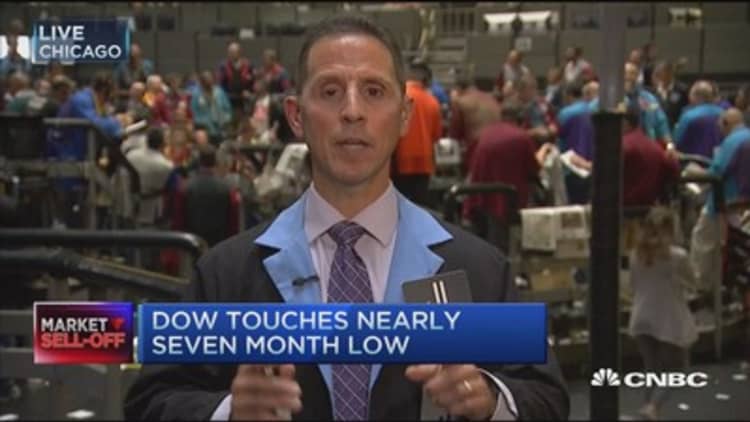
U.S. crude threatened to break below $40 per barrel for the first time since early 2009 this week, raising fresh fears about the cost of producing crude in America's oil patch—or perhaps "patches" is the better term.
Perhaps the only fall in the energy complex as spectacular has been the break-even cost to U.S. drillers of producing a barrel of oil.
Those costs vary widely across the country's shale fields—from Texas' prolific Permian Basin to the Northeast's gassy Marcellus Shale—but productivity gains have helped producers continue pumping. However, with many analysts now expecting U.S. crude to fall into the $30s, the question is how low can prices go before producers turn off the tap.
It's still cost-effective down to prices of $10 per barrel to maintain many existing wells across the United States, which is why drillers have not shut in production. But producers face a significantly higher bar when it comes to authorizing new production, because the cost of drilling and finishing a well accounts for the lion's share of lifetime costs.
Read More The oil bottom is in when the handcuffs come out
"I think we're going to test those break-evens at every play across the country," Michael Scialla, energy research analyst at Stifel Nicolaus told CNBC.
To be sure, producers have brought down costs by securing price cuts from service providers and pioneering more efficient recovery methods, but they may still think twice about bringing new production on line, he said.
"We're pretty rapidly approaching a point, even if the well economies continue to make sense, that some companies are going to say, 'Wait a minute. These prices are not sustainable. We should not be drilling much of anything if oil is going down to 30 bucks and staying there for a while," Scialla said
That's exactly where prices are heading, according to Citibank, which recently revised downward its outlook for oil to an average of $39 per barrel for the fourth quarter of 2015 and first quarter of 2016.
Read MoreWorld drowns in oil as producers slug it out
Oil markets are in the first rebalancing of the shale era, and the single biggest factor is the supply of American crude, Eric Lee, Citigroup commodities strategist, said Thursday.
Though the number of rigs exploring for oil in American fields has collapsed since December, U.S. production remains near historic highs at about 9.3 million barrels a day.
Shale muscled into the middle of the cost curve in the $30 to $70 cost level, but the price of producing a barrel of oil is still heading downward, Lee said.
"Cost deflation in the sector is pretty spectacular due to low utilization in the services sector, but also productivity gains," he told CNBC's "Squawk on the Street."

In North Dakota's Bakken formation, the break-even cost has fallen into the $20s in some counties, the state's Department of Mineral Resources reported last month. Producing a barrel of oil would still be profitable at $24 in Dunn County, down from $29 last October.
Still, the Bakken is one of the most vulnerable to price drops despite having low break-even prices, John Kilduff, founding partner at Again Capital said. That's primarily due to its remote location.
"The rail is limited and trucking is going to become even more problematic as the price goes lower and lower," he told CNBC, noting that service providers have already reduced their rates significantly. "We're coming to the point where they just can't cut anymore on that frontier."
Read More Goldman: 6 stocks to ride lower oil 'tail wind'
While service providers offered concessions of 20 to 25 percent in the first quarter of 2015, further cuts in excess of 10 percent are not likely, Scialla said.
That presents a problem for producers in the Bakken and the Niobrara Chalk, which lies beneath Colorado, Kansas, Wyoming and Nebraska, he added. Both plays are on the wrong side of the Cushing, Oklahoma, delivery point for U.S. benchmark West Texas Intermediate crude, adding to the cost of transport.
Rail and pipeline improvements have brought the cost differential of bringing Colorado's crude to market down from $13 a barrel to about $7 or $8, but that's still a wide gap with oil near $40, he said.


